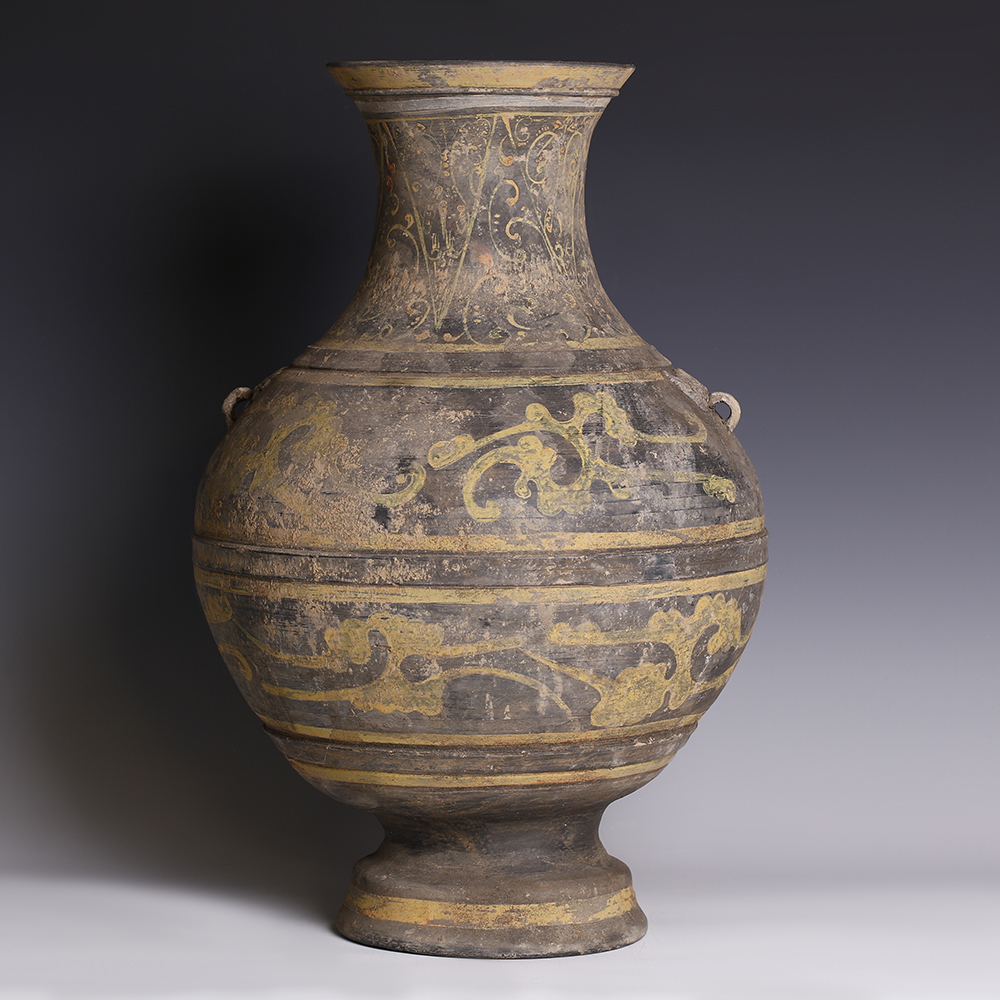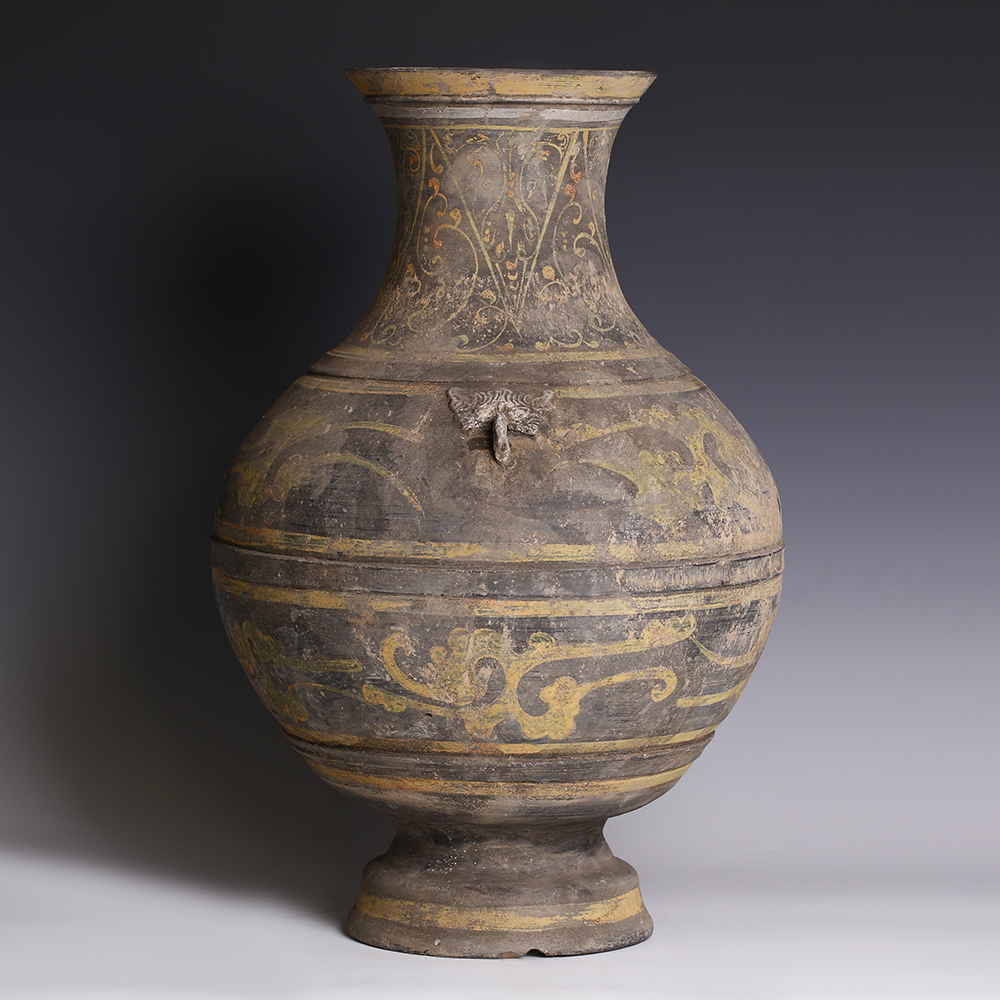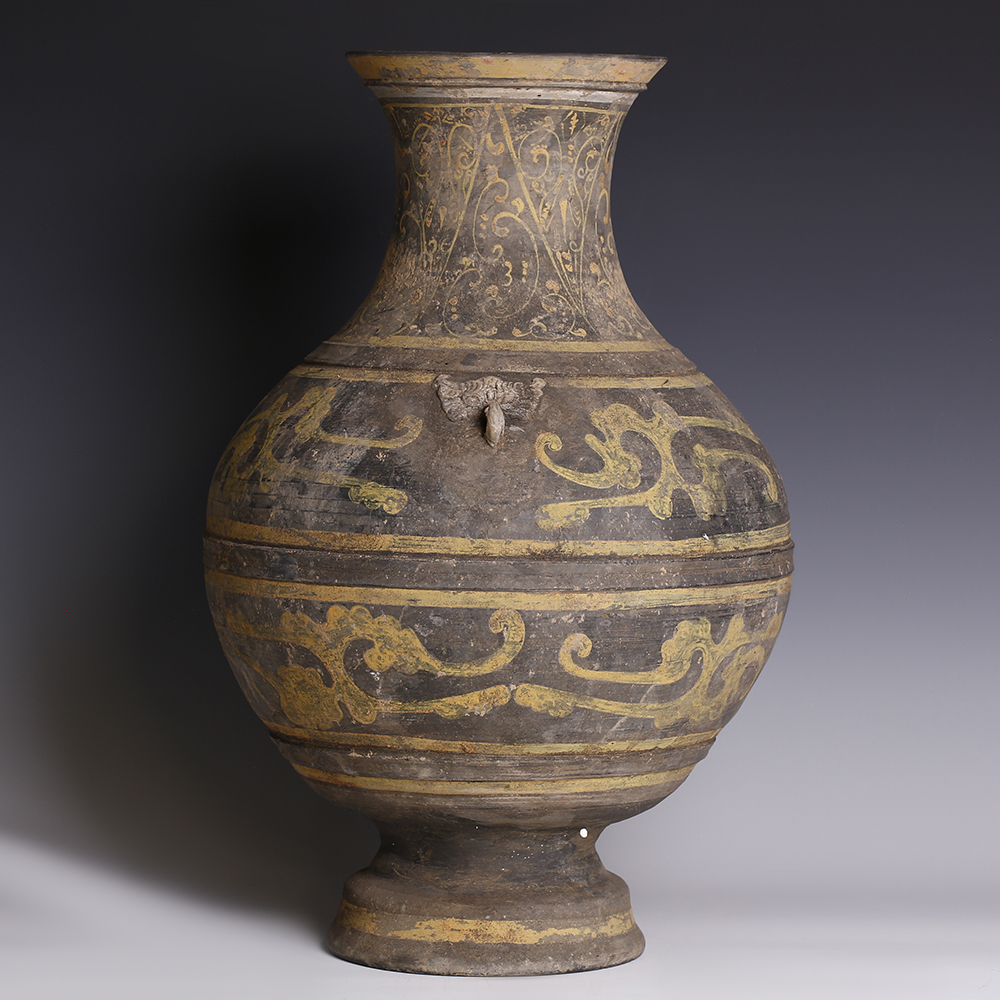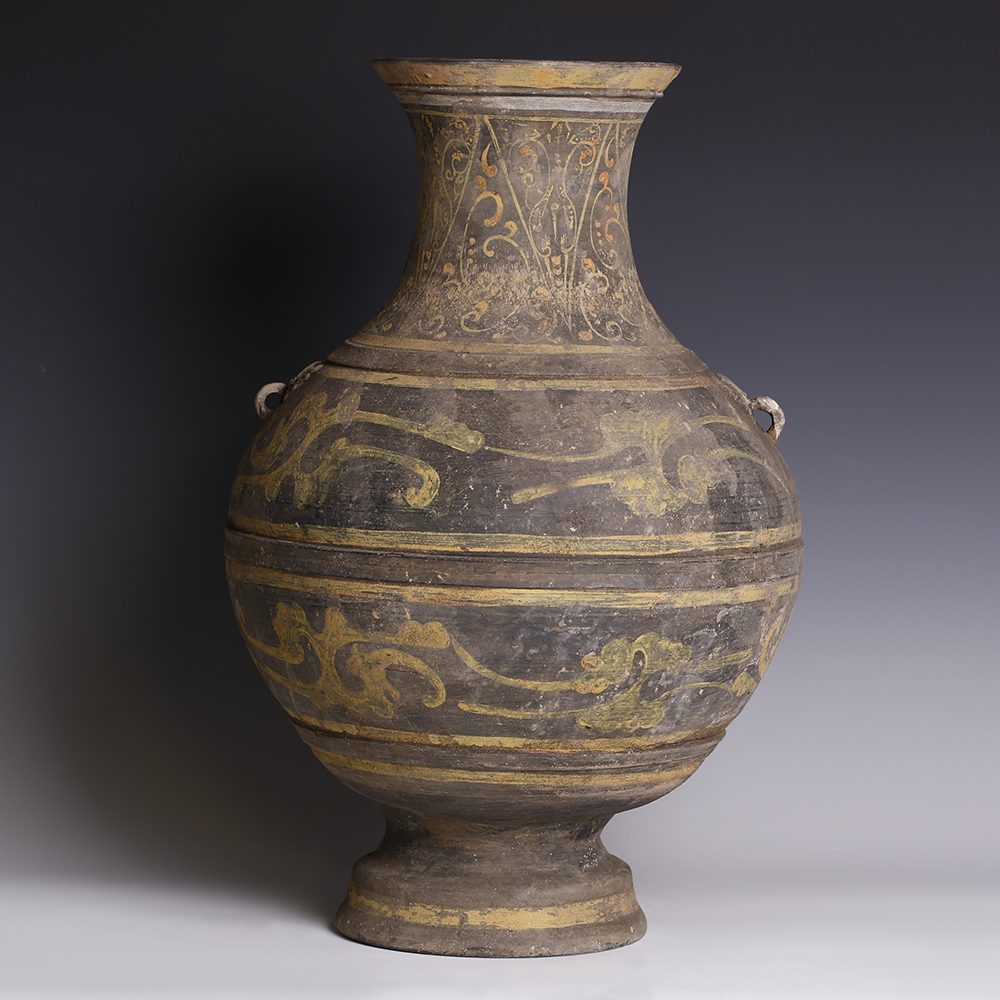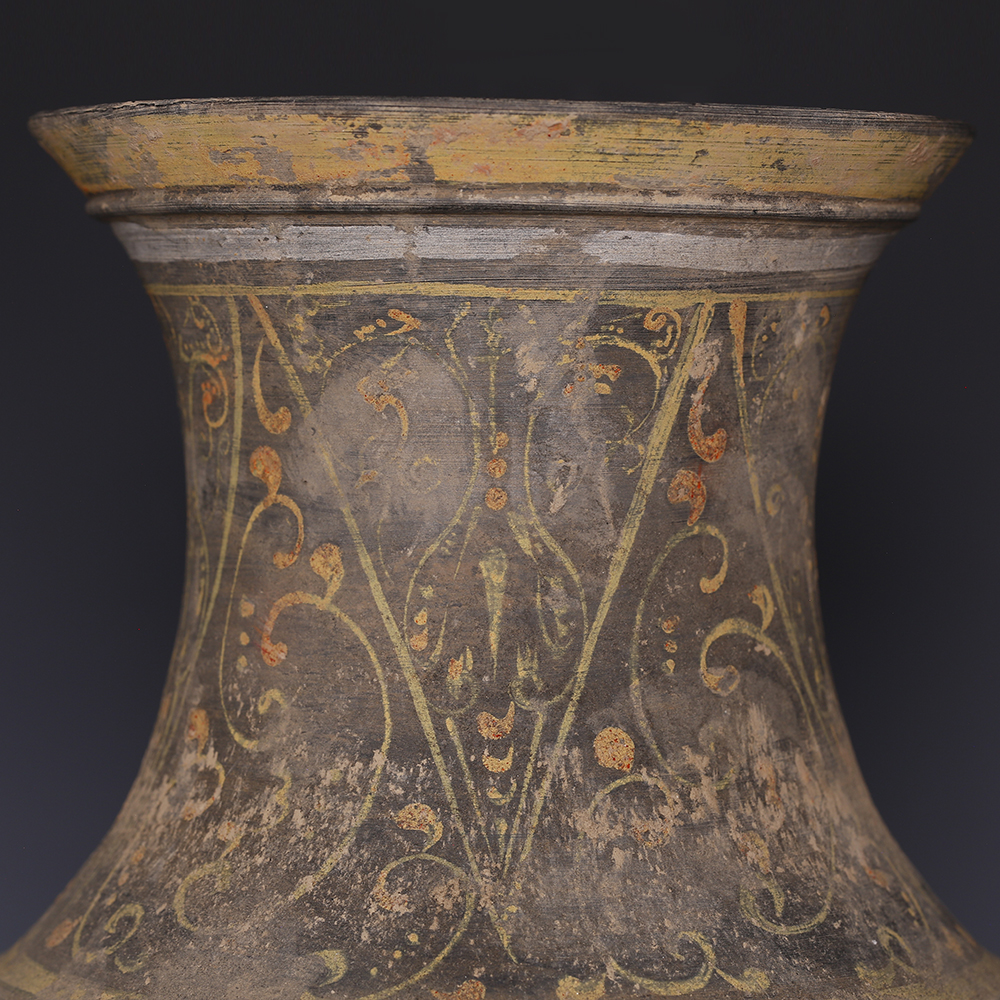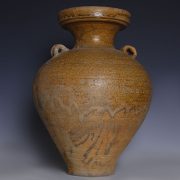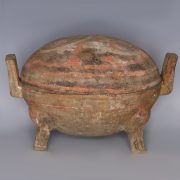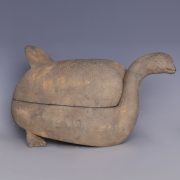The Western Han Dynasty is known for producing painted terracotta vessels that imitated archaic bronze prototypes. The shape of this example is reminiscent of the distinctive bronze hu vessel of the Shang-Zhou Dynasties. Taotie patterns are frequently depicted on the bronze vessels of the early Shang-Zhou dynasties, usually found on bronze ding vessels, a container that was used to cook foods. The taotie, was a mythological monster featuring a lion’s face and a dragon’s tail. According to Chinese mythology, the Taotie is one of the nine dragon sons, known for its great appetite and linked to the gluttonous. Taotie patterns have multiple variations and have been frequently employed to decorate the surfaces of bronze vessels in ancient China. The derived Kui patterns, seen on the body of this example, are presented in abstract yet precise strokes, giving only a skeleton impression of its antecedent complexes that originated in the Xia-Shang-Zhou dynasties (circa 2205 BC- 878 BC). Kui patterns that were used to adorn ancient Chinese objects, refer to a mysterious creature that features a serpentine body and a phoenix’s head. On traditional Chinese bronze wares, the elongated bodies of Kui creatures are usually represented by geometric and abstract expressions, thus Kui patterns have been designated as the derived kui patterns in order to differentiate the naturalistic and elaborate styles.
Han Terracotta Polychrome Painted Hu
$2,798.89
A finely sculpted Han terracotta hu features a semi-globular body supported by a flared base, which gradually tapers into a long neck. It has a wide opening with an everted rim. The neck is fully ornamented with floral and geometric patterns, painted in red pigments. There are two stripes, painted in beige pigments, encircling the shoulder and the bottom of the neck. The Kui patterns, stylistically derived from the decoration seen on traditional Chinese bronze wares, decorate the body of this Hu vessel. Two handle prompts attached on each side in relief, depicted in Taotie patterns, stylistically imitate the archaic metal parallels.
Period: Western Han Dynasty
Provenance: From the collection of a West Country gentleman, formed in 1970s.
Condition: Good condition, with polychrome pigments surviving on the surfaces.
In stock
| Weight | 4750 g |
|---|---|
| Dimensions | W 27.2 x H 42.2 cm |
| Culture | |
| Pottery and Porcelain | |
| Region |
